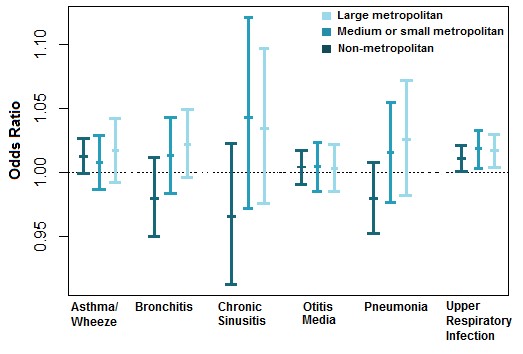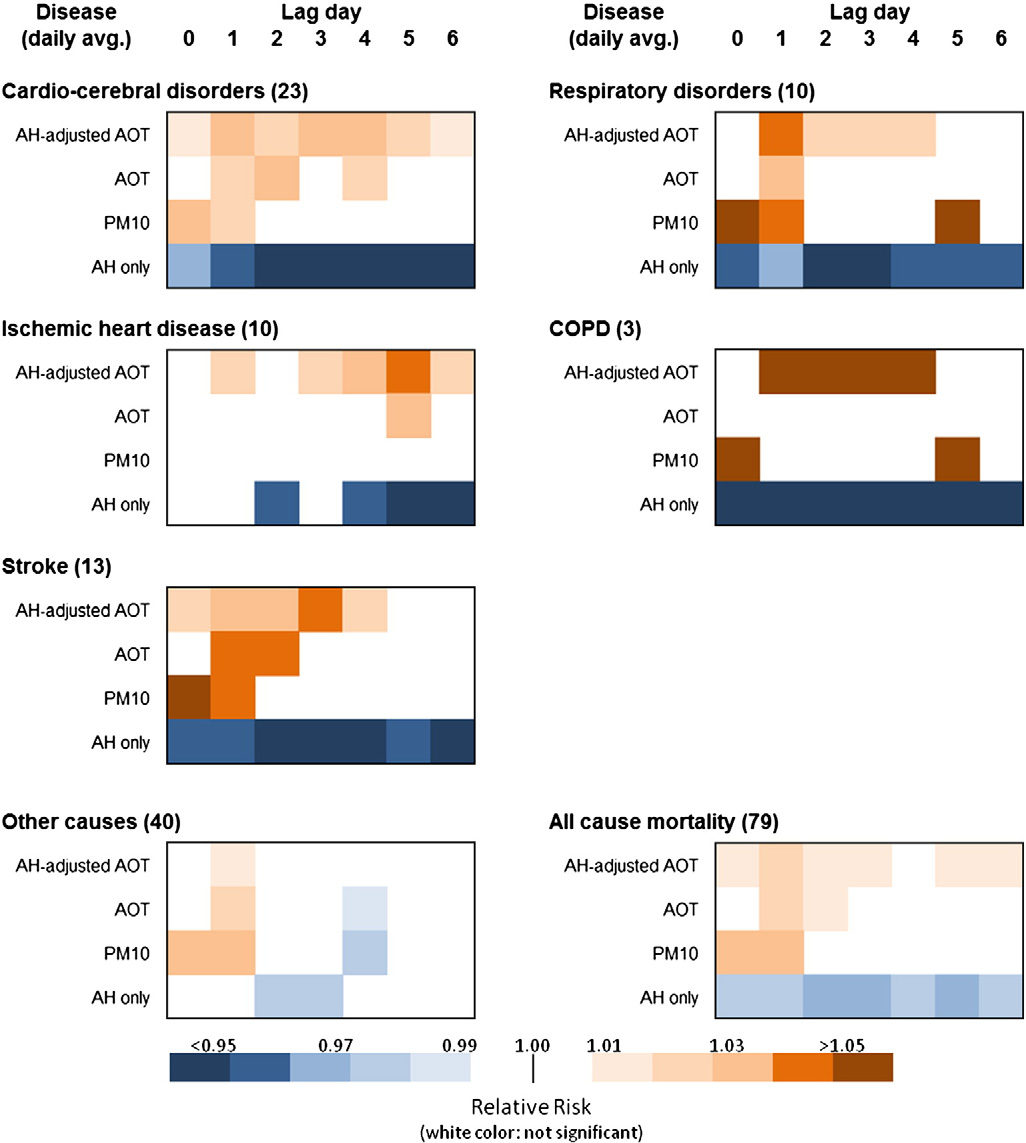Air pollution health effects
Environmental epidemiologic studies worldwide have linked exposure
to PM2.5 with various adverse health outcomes including respiratory
and cardiovascular morbidity and mortality. These adverse health
outcomes can be observed at relatively low PM2.5 levels measured in
urban areas in the U.S. and Canada. In the developing world, ambient
PM2.5 pollution is the 4th highest ranking risk factor in East Asia,
the 6th in South Asia and the 7th in Africa and the Middle East, where
mean PM2.5 levels are several-fold higher than in North America.
Worldwide, WHO estimated that in 2012, 3.7 million deaths were
attributable to ambient PM, ~88% of which occur in low- and
middle-income countries.
Historically, population exposure to PM has been estimated using
measurements made by expensive in situ monitoring stations. However,
such monitoring networks are sparse or nonexistent in many parts of
the world where PM concentrations are the largest. Even in the US, the
~1,200 stations operated by the EPA are located in only 30% of the
nation’s ~3,100 counties.Lack of exposure estimates has been a serious
limiting factor to evaluate its associated health outcomes in the
developing world with little or no long-term surface monitoring.
Satellite-retrieved aerosol properties such as AOD have emerged as a
promising solution to provide worldwide PM2.5 exposure estimates. Over
the past decade, various satellite-based methods have been developed
to estimate ground-level PM2.5 levels to effectively augment ground
monitoring and help fill data gaps that impede efforts to study air
pollution health effects. Working with several collaborators, our
group has developed advanced exposure models to study the association
between PM2.5 exposure and various health end points such as excess
mortality, birth outcomes/defects, and type 2 diabetes.
Example: Odds ratios per 10 µg/m3 increase in satellite-estimated
same-day PM2.5 concentrations and ED visits for six pediatric health
outcomes in Georgia, 1 January 2002 – 30 June 2010, stratified by
county-level urbanicity (Strickland et al. EHP, 2016).

Example: heat maps showing the effects of ground and satellite
remote monitored air pollution and absolute humidity on daily
mortality in Beijing in 2006 (Wang et al. EI, 2013).


